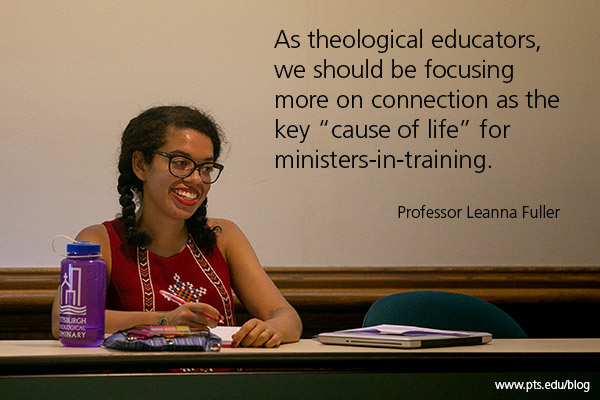A few years ago, I attended a leadership development event. The two-day meeting focused on the theme of abundant life and how leaders might help create communities where abundant life can flourish.
In preparation for the event, participants were asked to read a book called Leading Causes of Life by Gary Gunderson and Larry Pray. In this book, the authors argue for an approach to community that focuses on cultivating what is life-giving rather than trying to defeat what is death-dealing. To put it another way, Gunderson and Pray urge people of faith to nurture what is right in their communities, rather than spending all their energy trying to fix what’s wrong. It’s an approach that is focused more on cultivating health than on eliminating pathology.
Throughout the book, the authors argue that the abundant life for which so many of us long is already present in our midst. Our job, then, is to notice and nourish it. To this end, Gunderson and Pray describe what they see as the five main “causes” of life: connection, coherence, agency, blessing, and hope. As the authors explain, “The five causes are not platitudes. They do not represent ideals. [We] are not saying that life should help us connect, that it should have meaning, that it should be hopeful, that it should be a blessing, and that it should lead to action. We are saying that it actually does all five. We have noticed that life happens when these five Leading Causes are present and that their absence contributes to the void so many of us feel.”
Classroom Application
Ever since I read Gunderson and Pray’s book, I have been pondering the leading causes of life and wondering how they might be relevant in the context of theological education—and specifically, in my own teaching. I have found myself contemplating questions like:
- How might my teaching change if I focused my energy on what students are already doing well, rather than on areas of “deficiency”?
- How might I more effectively notice and nourish connection, coherence, agency, blessing, and hope in my classroom as a way of nurturing abundant life?
- How might I invite students to notice and nourish the leading causes of life in a classroom setting?
As I thought about these questions, I began to realize that some of my most satisfying teaching experiences have involved intentionally nurturing the causes of life—even though, at the time, I didn’t necessarily know that’s what I was doing. For instance, around the same time that I participated in this leadership development program, I taught a new course in the MDiv curriculum called Justice and Pastoral Care which dealt with a number of difficult themes like racism, sexism, and displacement. Despite the charged content of the class, students worked extremely well together throughout the course. Although there were disagreements at times, the conversation remained respectful and generative.
Nurturing Connection
In reflecting on what contributed to the positive nature of this experience in the classroom, I realized that I had focused much of my energy, especially in the first few weeks of the course, on nurturing connection between class members. I tried to do this in a variety of ways; here are a few that I think were especially effective:
- Capping the class size at 12 to make sure everyone could participate easily in class discussions.
- Requiring students to work in teams of two to lead the devotional time for one class meeting during the term.
- Making frequent use of pair or small group exercises to allow students to interact with each other more closely.
- Asking all students to prepare a “learning biography” [1] about their most compelling experiences of justice work. The assignment was submitted to me in writing, but was also shared in class with a partner.
As I think back on this class, I can see that nurturing connection was central to the success of the class. Students who took the course shared with me, both during the class and on their final written evaluations, how important it was for them to have a place to engage hard conversations with one another. In fact, several different students mentioned in our class discussions that they felt that these kinds of “safe spaces”—spaces where candid conversations about race, gender, class, sexuality, and other difficult topics could take place constructively—were lacking on our campus and in the ministry contexts they serve.
Taking Connection Beyond the Classroom
This insight makes me wonder whether, as theological educators, we should be focusing more on connection as the key “cause of life” for ministers-in-training—not only as a way of enhancing classroom learning, but as a way of contributing to the formation of individuals who can model and nurture connection in the diverse communities of which they are a part.
[1] I borrowed the idea for the learning biography assignment from practical theologian Boyung Lee, who writes about it in the following essay: Boyung Lee, “Teaching Disruptively: Pedagogical Strategies to Teach Cultural Diversity and Race,” in Teaching for a Culturally Diverse and Racially Just World, Ed. Eleazar S. Fernandez, Eugene, OR: Cascade Books, 2014.
The Rev. Dr. Leanna Fuller serves as interim vice president for academic affairs and dean of faculty in addition to being associate professor of pastoral care. She is a graduate of Vanderbilt University (Ph.D.), Vanderbilt Divinity School (M.Div.), and Furman University (B.A.). She is the author of When Christ’s Body is Broken: Anxiety, Identity, and Conflict in Congregations (Wipf and Stock, 2016).

